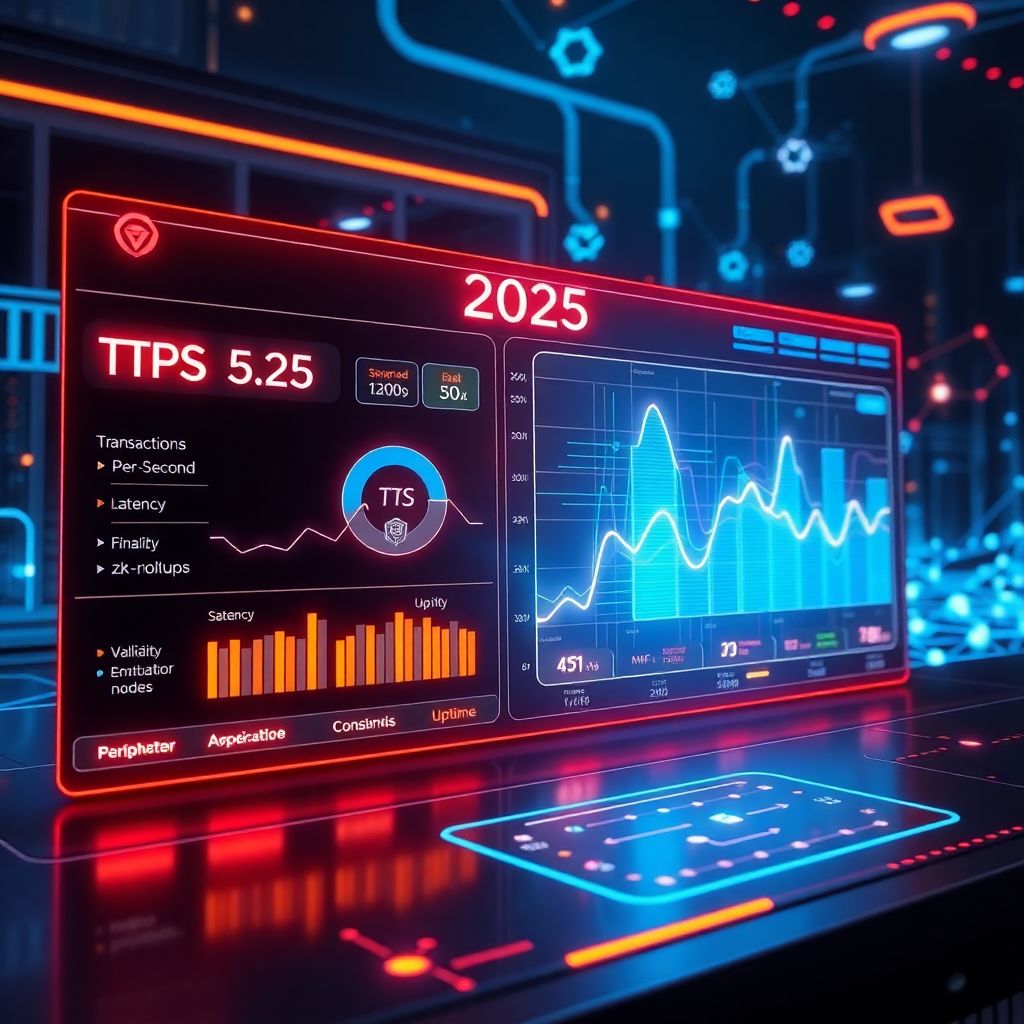Why Blockchain Performance Metrics Matter in 2025
In the ever-evolving world of decentralized technologies, understanding how to measure a blockchain’s performance is no longer optional—it’s essential. Whether you’re an investor, developer, or just a curious beginner, analyzing performance metrics helps you separate hype from innovation. In 2025, with the rise of modular blockchains, zk-rollups, and AI-integrated consensus algorithms, performance evaluation has become more nuanced—and exciting—than ever before.
Let’s break down the key metrics, explore real-world examples, and give you a head start in this fast-paced space.
The Core Metrics: What You Should Look At First
Before diving into the latest trends, let’s talk about the backbone of blockchain performance. Here are the core metrics every beginner should understand:
– Throughput (TPS – Transactions Per Second): Measures how many transactions a blockchain can process in a second. Ethereum post-merge now hits ~100 TPS natively, but Layer 2s like Arbitrum and zkSync scale that into the thousands.
– Latency: The time it takes for a transaction to be confirmed. In 2025, sub-second latency is becoming a standard for L2 solutions.
– Finality: When a transaction becomes irreversible. Proof-of-Stake chains like Avalanche and Solana boast near-instant finality.
– Uptime & Reliability: A chain’s operational consistency. Downtime means lost revenue and trust.
Understanding these numbers helps you evaluate whether a blockchain is suitable for gaming, DeFi, or enterprise applications.
Modern Trends: What’s Shaping Performance in 2025
The blockchain landscape has matured significantly. Gone are the days when TPS was the only thing that mattered. Here’s what’s trending:
– Modular Architecture: Chains like Celestia and Fuel separate consensus, execution, and data availability. This modularity allows for highly optimized performance in each layer.
– Zero-Knowledge Rollups (zk-rollups): zkSync Era and Starknet are pushing performance boundaries by processing transactions off-chain and submitting succinct proofs back to Ethereum.
– AI-Enhanced Consensus: New protocols like Fathom and Morpheus use AI to predict and optimize network congestion, improving both throughput and energy efficiency.
These innovations are not just theoretical—they’re powering real-world apps with millions of users.
Inspirational Case Studies: Success Through Smart Metrics
Let’s look at projects that have used performance metrics not just for reporting—but for building better products.
Case 1: Optimism’s Growth Strategy
In 2023–2025, Optimism focused on reducing latency and improving TPS through its Bedrock upgrade. By closely monitoring performance, they doubled user retention and improved developer adoption.
Case 2: Solana’s Comeback
After facing network outages in 2022, Solana reengineered its validator system and integrated Firedancer (a new validator client) in 2024. They now boast one of the highest uptimes in the industry—all thanks to relentless performance analysis.
Case 3: Starknet’s Developer Ecosystem
Starknet provided real-time metrics dashboards for developers, enabling them to optimize smart contracts. This transparency attracted top-tier projects in DeFi and gaming.
How You Can Start: Practical Steps for Beginners

You don’t need to be a data scientist to analyze blockchain performance. Start small, stay curious, and use the right tools.
Tools to Explore:
– Block Explorers: Etherscan, Solscan, or Celestia Scan provide real-time data on block time, gas fees, and transaction volume.
– Analytics Platforms: Use Dune Analytics or Flipside Crypto to visualize performance metrics through community-built dashboards.
– Validator & Node Data: Dive into uptime and latency data via tools like Grafana dashboards or Nodewatch.
Questions to Ask:

– How scalable is this blockchain under real-world conditions?
– Is the latency low enough for my use case?
– How decentralized is the validator set?
Asking the right questions will sharpen your intuition and help you spot quality projects early.
Learning Resources That Actually Help
There’s a lot of noise out there. Here are some high-signal resources to get you up to speed in 2025:
– Courses: Look for up-to-date blockchain courses on platforms like Buildspace, Coursera (offered by ConsenSys), and Encode Club.
– Communities: Join Discord servers for Starknet, Celestia, or Cosmos. You’ll find devs sharing metrics and debug tips in real time.
– YouTube Channels & Podcasts: Channels like Finematics and podcasts like Bankless often break down performance metrics in digestible ways.
And don’t forget to get hands-on. Spin up a testnet node, submit transactions, and use performance dashboards to see the raw data.
Final Thoughts: Your Journey Starts with Curiosity
Analyzing blockchain performance metrics in 2025 is about more than just numbers—it’s about understanding the heartbeat of decentralized systems. The best innovators in this space aren’t necessarily the smartest; they’re the most curious and consistent.
So don’t worry if it feels overwhelming at first. Every expert you admire once Googled “what is TPS?” You’re not late—you’re early. And with the right mindset and tools, you’ll not only understand performance metrics, but you’ll use them to build or support the next viral Web3 app.
The blockchain world needs more curious minds. Ready to dive in?

